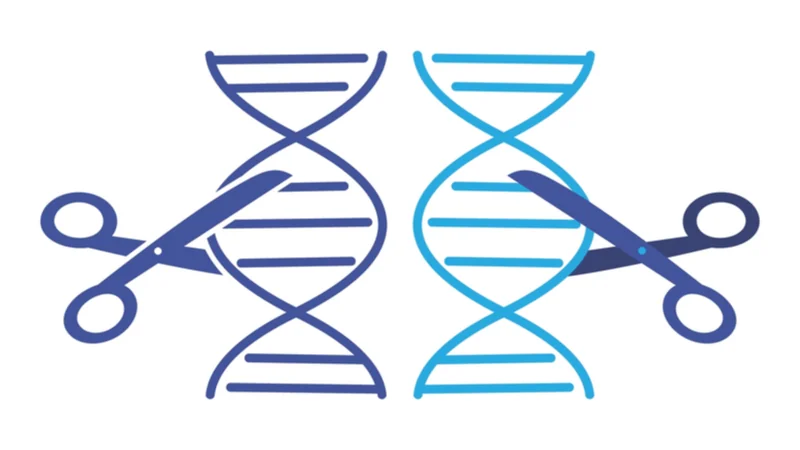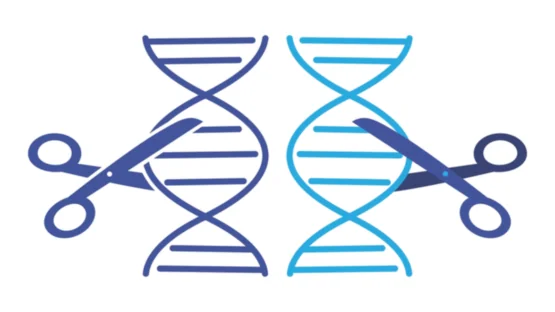A new study published in Nature Chemical Biology has described an advancement in the use of retrons, a novel method of genetic engineering that may become superior to CRISPR technology.
A new solution for an old problem
The researchers begin their paper by pointing out some of the ongoing problems with existing genetic engineering technology. Modifying DNA in a consistent way between cells is difficult and inconsistent, with ongoing technical challenges that can cause severe genetic damage [1].
They also mention other recent work done in the field of retrons. Retrons, which are naturally used by bacteria as a part of phage defense [2], can be used to produce DNA within target cells [3]. This DNA can then be integrated within the cells’ genome through other biotechnologies, such as the well-known “gene scissors” Cas9.
However, previous work with retrons has mostly been done only in bacteria, with only one test done in yeast and a small test done in mammalian cells [4]. The researchers also note that retrons have only been edited to the minimum extent necessary to allow them to be used as editing tools.
A modification for more genomic content
As the researchers explain, a functional part of a retron (an operon) contains three elements: non-coding RNA (ncRNA) that provides a template, a reverse transcriptase (RT) that transforms this ncRNA into RT-DNA, and accessory proteins that assist in this process. As with previous work, the researchers showed that retrons can be used to substantially increase expression of the targeted in bacteria.
They also made modifications to the ncRNA. This RNA contains a long stem with a loop on top, and both of these pieces can be changed. The researchers found that stems between 12 and 30 base pairs were the most effective. Except for a strange spike at 28 base pairs, loops of only 5 base pairs work best, although much longer loops can still produce RT-DNA.
The genetic structures of bacteria and other cells are different, so the researchers had to make substantial modifications, inverting the operon from its normal state. However, once these modifications were made, both the Eco1 and Eco2 operon variants were successful in causing yeast cells to express the desired RT-DNA.
Human cells were much less strongly affected, although Eco2 was much more effective than Eco1. Extending the stem from 12 to 27 base pairs, which increased its effectiveness in yeast, harmed its effectiveness in human cells.
Combining RT-DNA and Cas9
The researchers then went on to test the effectiveness of their technique by incorporating it into a Cas9 genetic modification platform. The approach worked as intended, with the RT-DNA being inserted into the desired locations within a couple of days after injection into yeast. This approach was much more effective than Cas9 plasmids alone, yielding a substantially greater number of precise, on-target edits in multiple genetic loci.
However, in human cells, the on-target effects were still relatively small. This approach, at best, yields an astounding 74:1 ratio of on-target to off-target cells in yeast but a dismal 1:15 ratio in humans: a thousand times worse. Clearly, as the researchers themselves note, substantial modifications need to be made to this approach before we will see any benefits in mammals.
Conclusion
This technology is definitely in its infancy and requires significantly more work to be useful in human cells, let alone in living human beings. The limited number of base pairs is also a serious limitation of this technology, as it greatly restricts the potential proteins that can be encoded through a single use. This is doubly true in light of cytomegalovirus-based gene therapies that might allow for much larger sequences to be expressed in cells.
However, these technical problems are not necessarily insurmountable. If the differences between yeast and human cells can be sorted out and the technology properly modified, it may be feasible to drastically increase the on-target effects in human cells and make retron technology useful as a therapy. Ultimately, retrons may become an integral and safe part of the genetic modification landscape.
Literature
[1] Kosicki, M., Tomberg, K., & Bradley, A. (2018). Repair of double-strand breaks induced by CRISPR–Cas9 leads to large deletions and complex rearrangements. Nature biotechnology, 36(8), 765-771.
[2] Millman, A., Bernheim, A., Stokar-Avihail, A., Fedorenko, T., Voichek, M., Leavitt, A., … & Sorek, R. (2020). Bacterial retrons function in anti-phage defense. Cell, 183(6), 1551-1561.
[3] Farzadfard, F., & Lu, T. K. (2014). Genomically encoded analog memory with precise in vivo DNA writing in living cell populations. Science, 346(6211), 1256272.
[4] Mirochnitchenko, O., Inouye, S., & Inouye, M. (1994). Production of single-stranded DNA in mammalian cells by means of a bacterial retron. Journal of Biological Chemistry, 269(4), 2380-2383.




